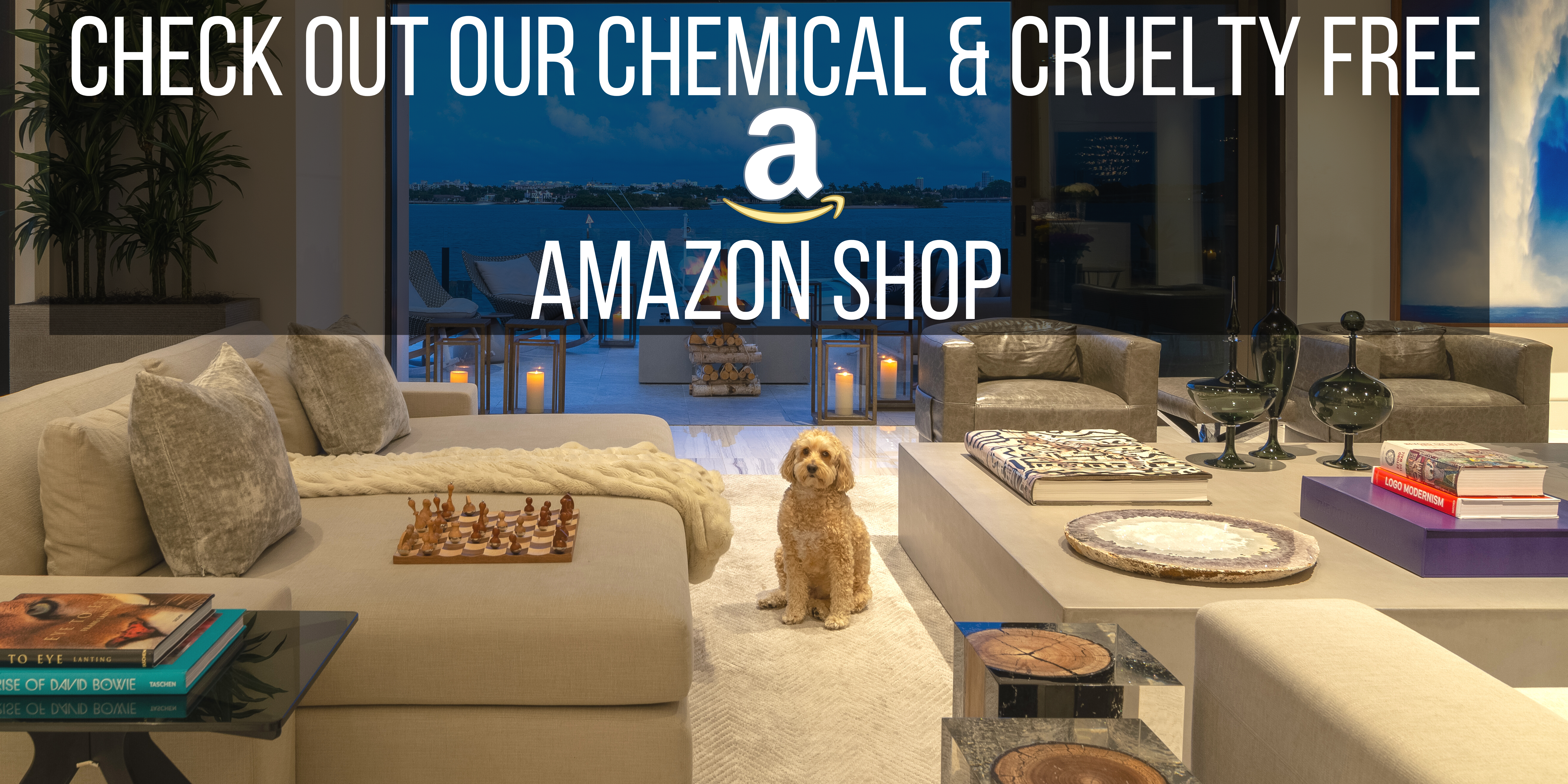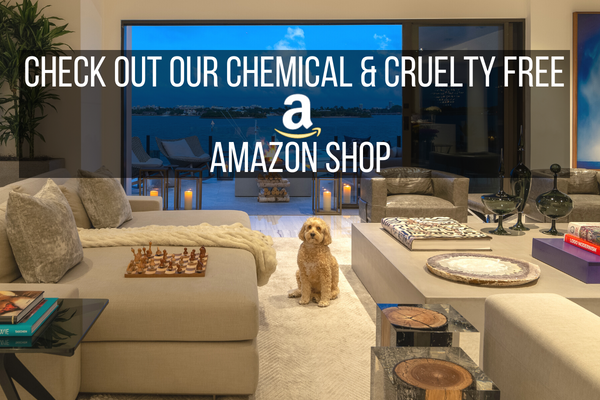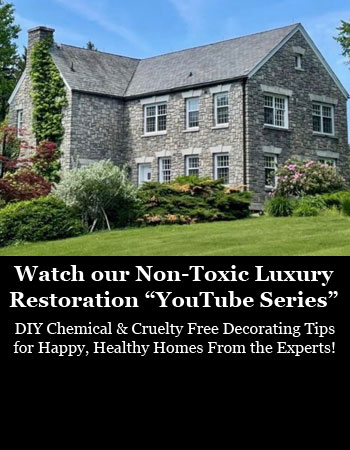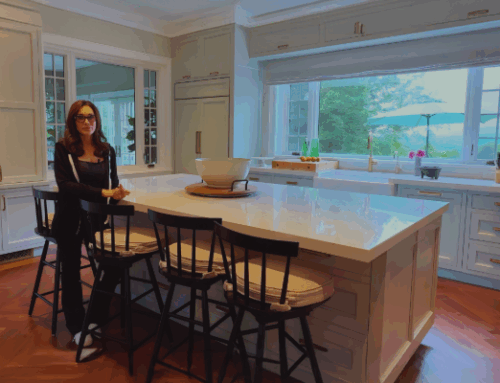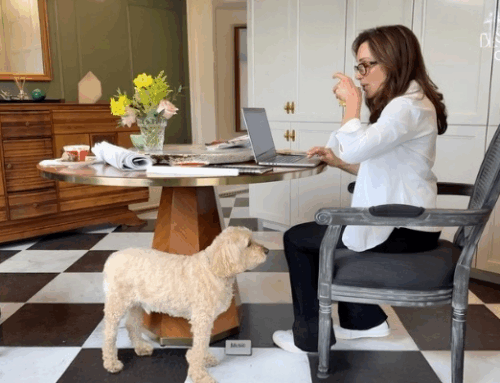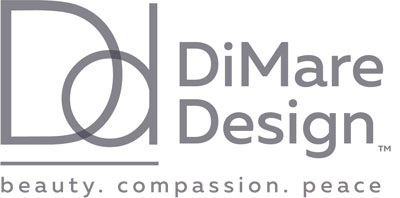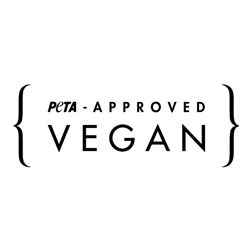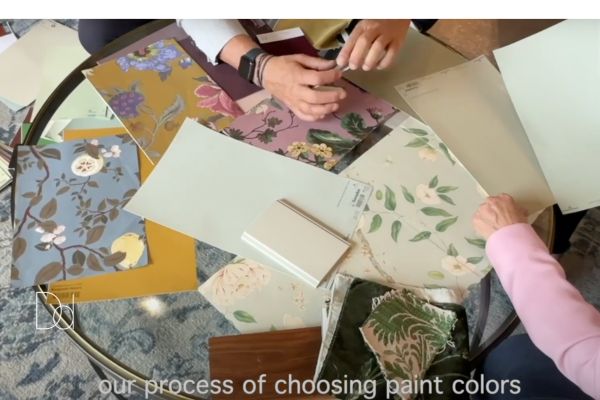
With so many different brands available, shopping for paint can be confusing and overwhelming. It's not only about finding the perfect color for your design project. But it's about educating yourself about healthier & safer paint options. We all love a beautifully decorated space, but clearly not at the cost of getting sick or harming the planet, animals and humans, right? So, here's everything you wanted to know about healthy & non toxic paint. Paint is made up of pigments, binders and solvents. So here goes a layman's description…
PIGMENTS AND COLORS
Pigments give the paint its color and opacity (its ability to cover the wall and hide blemishes). The pigments used in our paints increase the level of its absorption. One pigment to watch out for is Titanium Dioxide. What is it and why is it used? Titanium Dioxide is used in paint to give it opacity (see above). However, the World Health Organization suggests titanium dioxide may have carcinogenic properties.
BINDERS
This helps the paint adhere to a surface. There are a number of different types of binders including, latex (not used in the UK or EU). Latex is a man-made product comprising vinyl-acrylic. The healthier alternative for latex available in a number of paints is beech cellulose (100% plant based).
SOLVENTS
Solvents help with the dispersion of binders and pigments. Water can be used as a solvent in healthy humane paints. Generally, the term solvent refers to man made chemicals. For the healthier option select water-based paint.
CONVENTIONAL PAINTS
Traditional paints (polyacrylic paint) may include substances such as formaldehyde, heavy metals and plastics. What are these? Simply put these substances are chemicals known as volatile organic compounds (VOC's). The Guardian (2009) writes "producing 1 liter of paint can result in up to 30 liters of toxic waste".
Each layer of polyacrylic paint applied to a surface creates a thin plastic membrane, which has an effect on your home. Considering a room may require 2-3 layers of paint, this will not enable the walls to breath. What effect will this have on the space? Over time, this type of paint will trap moisture behind it. Ultimately, damp and mold may appear on your walls.
What effect can traditional paints have on the internal air quality of your home? Air pollution, we all know that polluted air is not good for us. Traditional paints can decrease the air quality within our homes and work spaces. The British Lung Foundation writes, "the internal air quality of a building has been associated with health issues, for instance, asthma, COPD and lung cancer." Shockingly, The Environmental Protection Agency (EPA) notes the effects of VOCs are about 2-5 times higher indoors than outdoors. The level of VOC in paint is strictly controlled by legislation in many developed countries. You can find this information on your local Government website. In addition, the VOC gases released by traditional paints can be higher than that of eco-friendly paints. It is suggested that certain VOCs emitted into the air of children's bedrooms can increase the likelihood of illnesses such as asthma, eczema and rhinitis. It is not just the toxic gases emitted from the paint after it has been applied to the walls, but the fumes it releases whilst your painting. These fumes can cause headaches, irritation of the eyes, feeling dizzy, nausea and cause trouble breathing.
You may be asking yourself, why is this paint used if it is associated with these kinds of health risks? Traditional paints are cheaper, considered by some to be more cost-effective and time-saving to apply. If you find yourself in a space, which is being decorated with traditional paints, here's how you can try to reduce the above effects:
- Always have good ventilation in the space.
- Ensure paint container lids are closed when not in use.
- Ventilate the space well for 2-3 days after work Is complete.
ECO-FRIENDLY & HUMANE PAINTS
With more and more of us wanting to protect the environment and use products which are healthy and animal friendly. What makes a paint eco-friendly and humane?
"A product, which has no detrimental effect on the environment or society".
Plant-based paints have a lower concentration of VOCs, which break down quicker compared to traditional paints. Whilst a paint may be sustainable it may not also be suitable for vegans. Some paint manufacturers include animal products in eco-friendly paints. For instance, Casein (a milk product), Shellac (a resin from the female Lac bug) and Beeswax.
Hmm, so what kind of things do we need to be looking at when selecting an eco-friendly and humane Paint?
- The carbon footprint of the paint, also referred to as cradle-to-grave impact? What is this? The carbon footprint associated with the making, transportation, and disposal of a product.
- The ingredients of the paint. This should be displayed on the tin. Paint manufacturers legally only have to disclose substances over certain quantities on the label. You can contact the supplier directly, requesting a complete break-down of the paint's ingredients.
- Whether it has been tested on animals. This information may take some digging, but can either be found on the supplier's website or by contacting them directly.
- If you have a family member who suffers from asthma, try using silicate paint.
- For nurseries and children's rooms, natural paints are ideal.
Be aware of any paint supplier advertising its product as VOC-free. No paint is completely VCO-free but, it can be low VOC. You may ask …do eco-friendly paints provide an array of colors similar to traditional paints? There is an increasing number of companies (some listed below) now providing eco-friendly and humane paints, which can be more expensive (at the moment), but the health and environmental benefits far out-way the costs.
We've included some examples of the different types of eco-friendly and humane paints that are currently available, you might want to check out the following:
- Montage Paint
- Renaissance
- AFM Safecoat
- Airlite
- Benjamin Moore Natura
- Ecos
- Farrow & Ball (all products except 'Soft Distemper' and 'Casein Distemper' are vegan)
- Green Planet Paints
- Unearthed Paints
IN CONCLUSION
Choosing the right paint, its color, environmental impact, and influence on health, may feel like that research project you participated in at college or university. What can sometimes feel unnecessarily complicated, can be made simpler by considering the above points. Stay safe and here's to making choosing paint to promote a healthy and happy home for you, your clients and your family.
Thanks for writing this fabulous article, Rachel! Rachel Fowlers is a self-driven, passionate creator of the sustainable and non toxic design.
Join our Facebook Community Design for a Non Toxic & Cruelty Free Home.
Check out our non-toxic and cruelty-free Amazon shop.
In case you missed it 🌸
Have you taken our newest beginner course?!
Learn more about the Online Nursery & Kids Room Design Course.
Need help creating a safe & healthy home for you & your family?
BOOK US for a 20-minute call!
Need even more family-friendly home design tips?
Meghan Markle and her choice of nursery paint.
Read more about pesticide-free Gardening Know How
How a good desk chair will improve back pain.
How to protect our marine life ocean plastic.
Best Materials for a Kitchen Backsplash Remodel.
What are volatile organic compounds (VOCs)?
How time in nature can improve our mental health and sharpen our cognition?
Why should I be concerned about lead poisoning?
31 Kitchen Color Ideas to Elevate Your Cabinetry Without a Full Remodel.
Just a heads up, this article may contain links to affiliate sites, products or services. If you purchase something through one of those links, you won't pay a penny more! The affiliate simply provides us with a small commission which helps us fund our operations, promoting healthy & compassionate interior decorating.
Share this with friends!
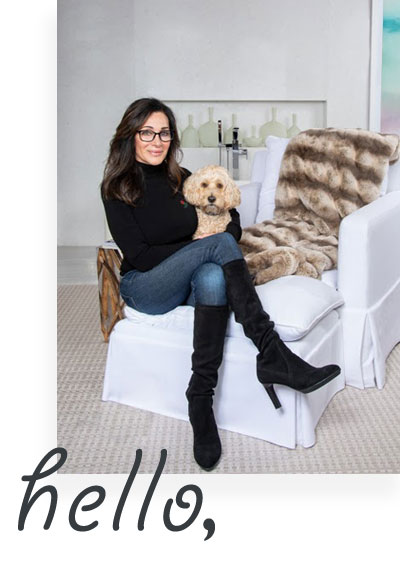
I'm Deborah! My mission is to show others by demonstration, that no living being, human & non, be sacrificed for beautiful, non toxic, healthy & durable furniture & decor. More about me.

